
Morels of the genus Morchella species is the favorite of mushroom hunters each Spring. Here in NE Kansas, 2015 has been a very good year for morels. Across the bridge in Missouri, the line of parked cars along the wooded river banks are filled with avid mushroom hunters searching for their elusive prey.
This year we decided to jump on the morel bandwagon. Over the past few years, my husband has found a few morels from time to time on our property. Since, I’m always eager to practice my photography and to see what native plants are blooming this time of year, I decided to tag along as a novice morel hunter.
Morels can be hard to find so it’s best to know their habitat and growing habits. We took off along the creek bed looking to either side of the bank. My husband knows the property quite well, so he was the first to spot our elusive quarry.
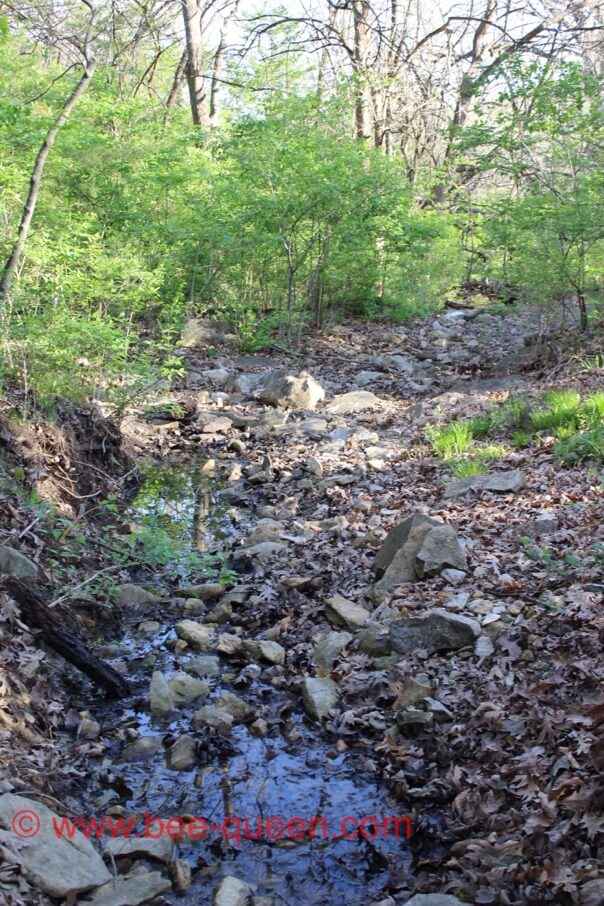
Morels are one of the first mushrooms of Spring. Depending on your location, they can be found between February thru June. They prefer damp soil and nearby trees of ash, elm and cottonwood. Wild flowers such as phlox, violets and trillium are commonly found in areas where morels grow.
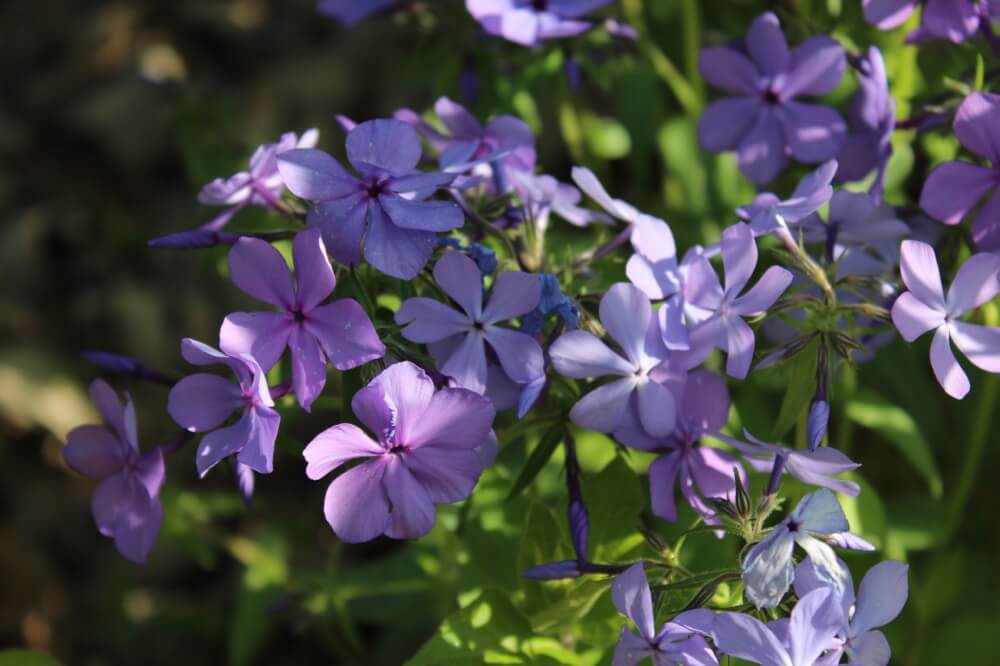
For a novice mushroom hunter like myself and one afraid of poisoning my friends and family with, “bad “shrooms, morels are fairly easy to identify. They jut up out of the ground with tall caps and indentations that fold inward. The stem is completely attached to the cap and the morel is hollow. When sliced in half, it looks like a mushroom mold.
Once my husband pointed out a couple of morels out, I got the hang of it. I began to train my eye and soon I was spotting morels and eagerly putting them into the bucket.
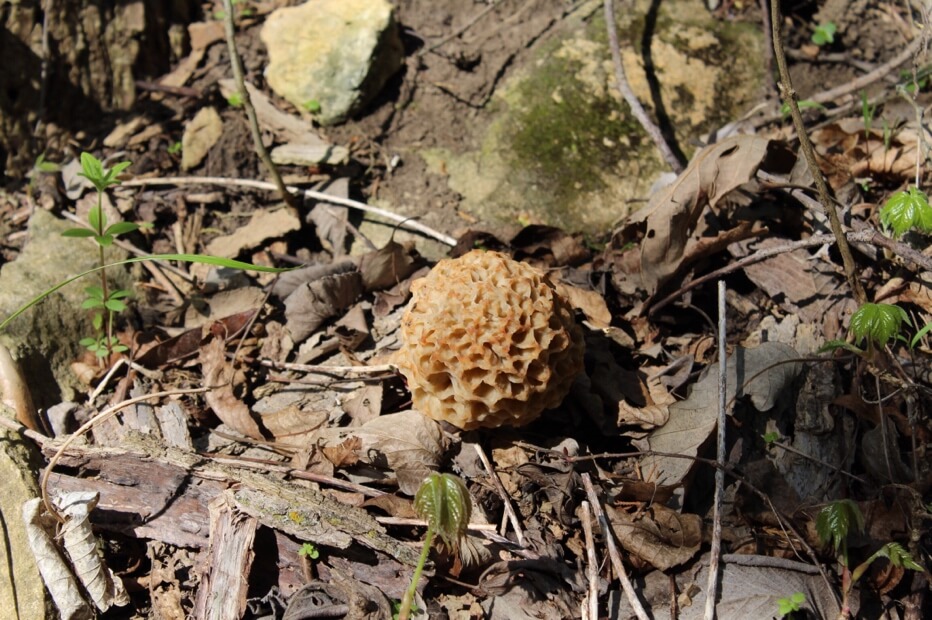
Morels come in two colors, white and black. We were only able to find the white this time of year. But, find them we did.
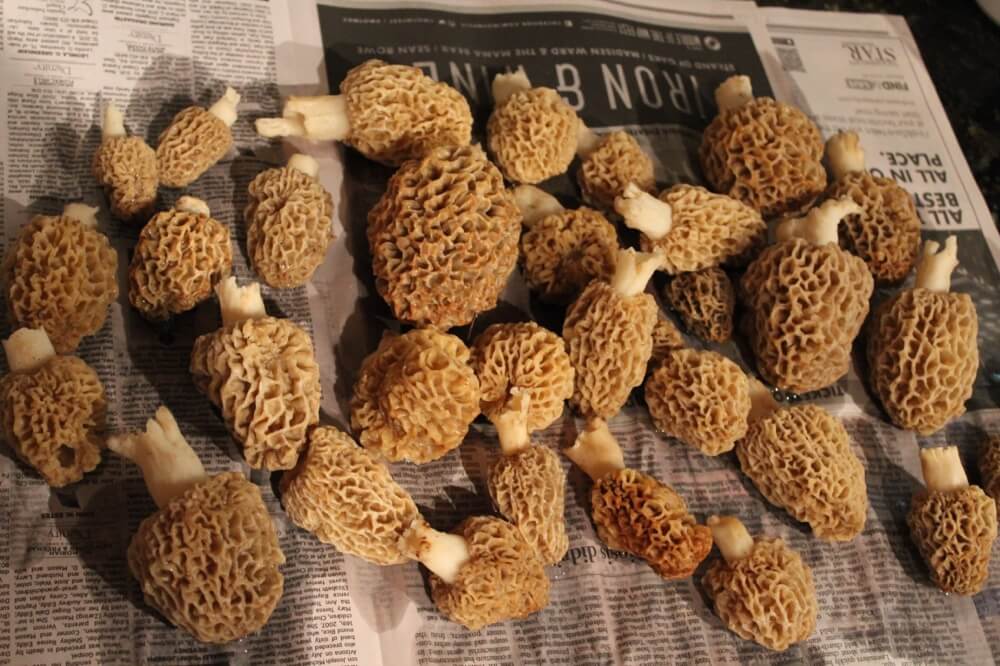
Morels need to be cleaned thoroughly as insects like ants and spiders love to crawl inside the hollow cap and or burrow into the indentations on the outside.
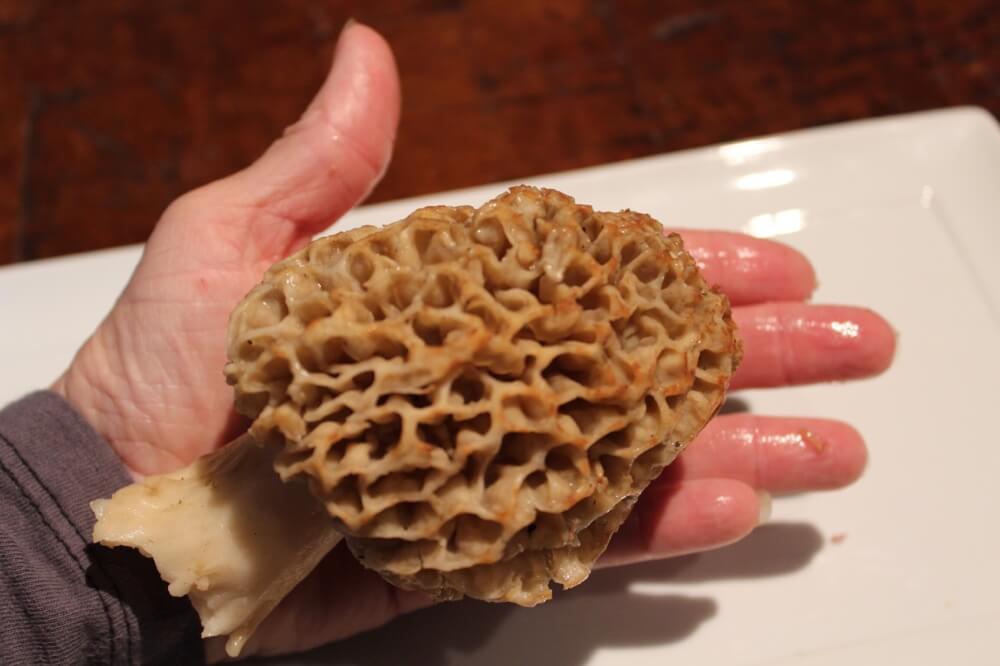
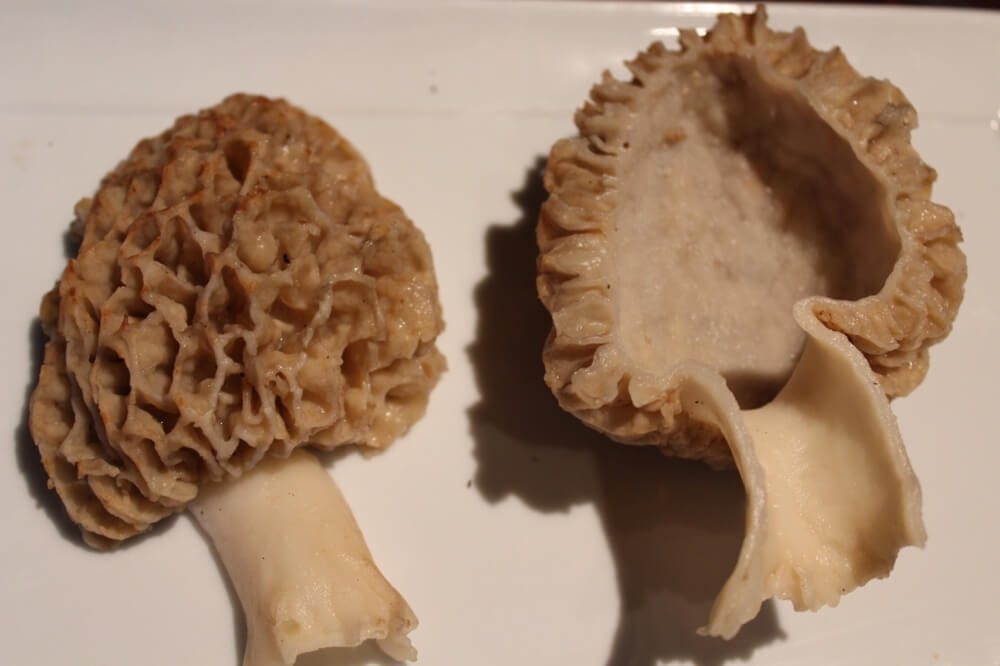
Morels should be cooked before eaten. A simple pan fry in butter is delicous. They have a nutty steak like flavor.
Sautéed in butter with shallots and fresh asparagus from the garden is absolutely my favorite! I have used this combination as a pizza topping and over pasta. YUM!
Morels can be stored in an airtight container for a few days prior to cooking. Just make sure they are completely dry before storage.
If you gather extra morels, they can be dried either in a dehydrator at 140 degrees or hung up to dry by stringing them together on dental floss in a cool dark place. Dried morels can be rehydrated prior to cooking. Make sure the morels are not touching one another.
My favorite method of storage is flash freezing on a cookie tray, then vacuumed sealed for later use. When flash freeziing, slice the morel in half lengthwise and allow to dry thoroughly after cleaning. Lay hollow side down on a cookie sheet lined with parchment paper. Place in freezer for about an hour. Ensure the mushroom is completely frozen prior to sealing.
Mushroom hunting can be quite addictive. I found myself thoroughly challenged by hunting this innocuous fungi. It’s a wonderful way to get your morning exercise while taking in the sights and sounds of Spring. So, get out in the woods and hunt morels. You’ll be glad you did!
P.S. Just remember to spray your clothing for ticks and watch out for snakes. You’ll be doubly glad you did!!







